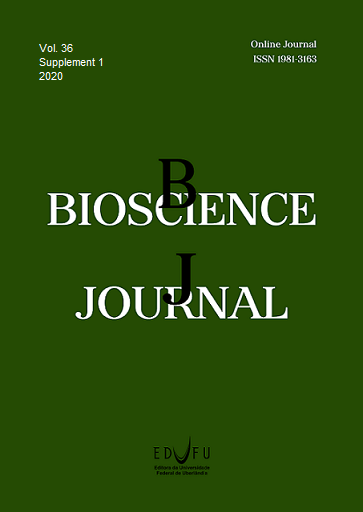Does the residual effect of n-fertilization applied on corn phase maintain forage production of the following pasture phase in an integrated crop-livestock system?
DOI:
https://doi.org/10.14393/BJ-v36n0a2020-53545Keywords:
Avena strigosa Schreb, Botanical composition, Continuous stocking, Lolium multiflorum Lam, Nutrient cyclingAbstract
Nutrient cycling represents an important nutrient source in the Integrated Crop-Livestock Systems (ICLS). In general, only the crop phase of the ICLS is fertilized, however little is known about this residual effect of nitrogen fertilization from summer crop to succeeding winter pasture. This research aimed to evaluate the forage growth dynamic and botanical composition of a mixed pasture of black oat (Avena strigosa Schreb) and ryegrass (Lolium multiflorum Lam.) affected by two canopy height managements (high and low) and nitrogen fertilization applied to either the summer crop (corn) or winter pasture phase of an ICLS. The experiment was established in 2012 in southern Brazil. Black oat and ryegrass were growing during winter season and corn (Zea mays L.) during summer season, being this paper related to the 2014 pasture period. Treatments were composed by two canopy heights (25 and 10 cm) and two N-Fertilization Times (N-Pasture or N-Corn) of 200 kg of N ha-1. Canopy height was regulated by beef steers grazing through continuous stocking with a variable stocking rate. Forage mass was lower in the 10 cm canopy height on average, however this forage mass was composed by greater proportion of ryegrass leaves and lower proportion of dead material in relation to the treatment with 25 cm canopy height. The N-fertilization applied directly on pasture phase (N-Pasture) increased forage mass, tiller population density, participation of ryegrass and ryegrass leaf proportion in the forage mass. Furthermore, when pasture was fertilized with N, the forage accumulation rate increased about 69%, highlighting that the corn N-fertilization did not present significant effect on forage productivity. The residual effect of corn N-fertilization was not enough to maintain high forage accumulation. Thus, the pasture N-fertilization is fundamental to keep high-productive crop-livestock system.
Downloads
Published
Issue
Section
License
Copyright (c) 2020 Angela Bernardon, André Brugnara Soares, Denise Adelaide Gomes Elejalde, Tangriani Simioni Assmann, Angélica Caroline Zatta, Lucas Candiotto

This work is licensed under a Creative Commons Attribution 4.0 International License.





